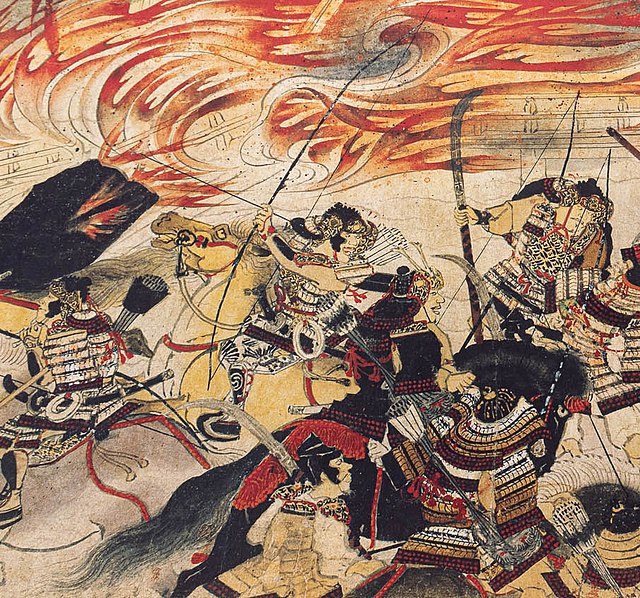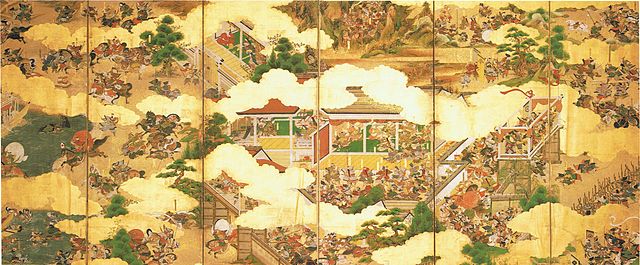Military history of Japan
The military history of Japan covers a vast time-period of over three millennia - from the Jōmon to the present day. After a long period of clan warfare until the 12th century, there followed feudal wars that culminated in military governments known as the Shogunate. History of Japan records that a military class and the Shōgun ruled Japan for 676 years - from 1192 until 1868. The Shōgun and the samurai warriors stood near the apex of the Japanese social structure - only the aristocratic nobility nominally outranked them. The sakoku policy effectively closed Japan from foreign influences for 212 years - from 1641 to 1853. Feudal militarism transitioned to imperialism in the 19th century after the arrival of U.S. Admiral Matthew C. Perry in 1853 and the elevation of Emperor Meiji in 1868. Western colonial powers and their imperialist policies impacted on Japan's outlook and led to Japanese colonialism and rampant imperialism until Japan's defeat in World War II. The 1947 Japanese Constitution prohibits Japan from offensively using war against other nations. This led to the establishment of the Japan Self-Defense Forces in 1954. The U.S.–Japan Alliance requires the United States to protect Japan and to conduct offensive duties. In 2015, the Japanese government voted to reinterpret the constitution to allow collective self-defense of Japan's allies.

Iron helmet and armour with gilt bronze decoration, Kofun era, 5th century. Tokyo National Museum.
The Genpei War in the 12th century
The Gosannen War in the 11th century
Heiji rebellion in 1159
The Genpei War was a national civil war between the Taira and Minamoto clans during the late Heian period of Japan. It resulted in the downfall of the Taira and the establishment of the Kamakura shogunate under Minamoto no Yoritomo, who appointed himself as Shōgun in 1192, governing Japan as a military dictator from the eastern city of Kamakura.
Scene of the Genpei War
The Heiji rebellion (1159) and the subsequent rise of the Taira were the main cause of the Genpei War 20 years later.
Scene of the Genpei war (1180–1185), Kanō Motonobu (1476–1569), Muromachi period (1336 and 1573).
The Phoenix Hall of the Byōdō-in, where Yorimasa committed seppuku







